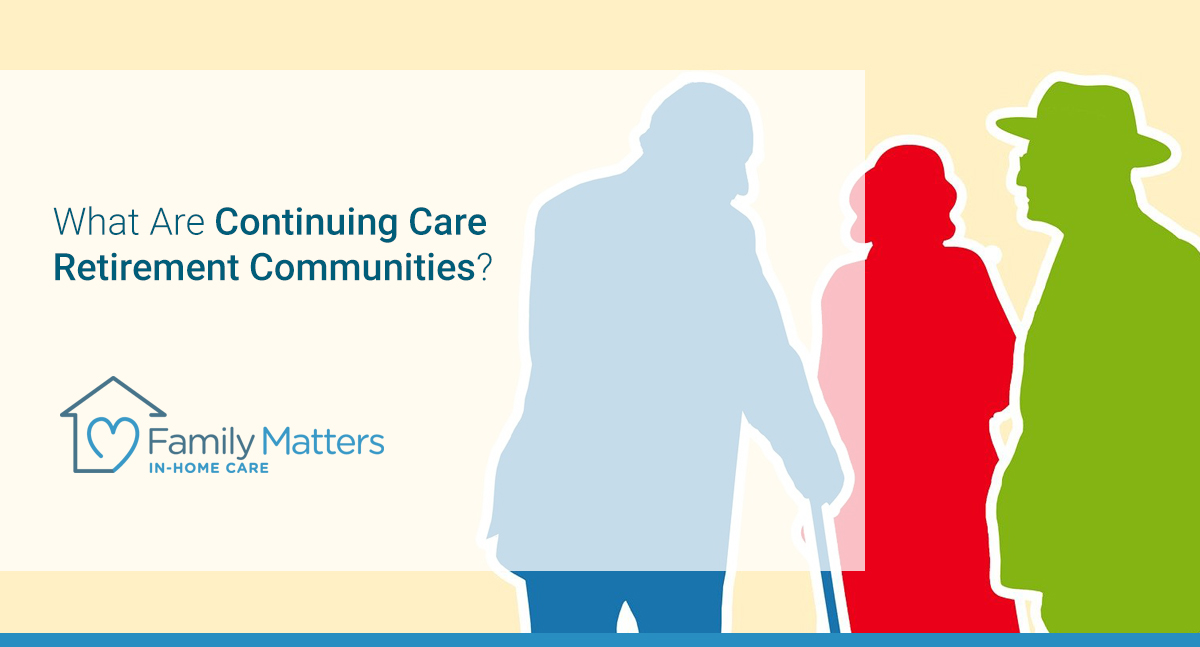
What Are Continuing Care Retirement Communities?
Do you have a parent or other senior family member who may benefit from moving out of their own home?
Everyone wants to remain in their home as they age, which can make it difficult for seniors to make a transition into a senior living community. One type of senior living community aims to make this process easier by offering various types of care and amenities.
Continuing care retirement communities place a heavy emphasis on the idea of aging in place. These communities allow seniors to transition into one living environment and remain there while they receive ongoing medical care, memory services, and more.
Learn about the selection of options available in continuing care communities to decide whether it’s the right choice for your loved one.
Continuing Care Retirement Communities
Also known as a CCRC, a continuing care retirement community is a senior living community designed to provide living arrangements with easy access to medical care. A CCRC allows seniors to age in place while receiving the care they need with ongoing medical concerns, cognitive issues, or limited mobility.
In a continuing care retirement community, there are several options for living arrangements. Seniors can live either independently in a home or apartment of their own or in a communal facility with other seniors.
Independent vs. assisted living is typically determined based on each resident’s unique needs and what level of assistance they require.
Signs Someone Needs Continuing Care
If your parent or another elderly loved one is showing the following signs, they may benefit from moving into a continuing care retirement community:
- Forgetfulness
- Falls and injuries
- Limited mobility
- Inability to drive
- Issues with recall
- Ongoing health concerns
When someone you care for is aging, the changes they are going through can be a delicate topic.
Before making any plans for your loved one to move into a CCRC, always speak with them about their questions and concerns. Many continuing care communities provide resources that can help with the transition from their own home into a CCRC.
Options in Continuing Care Communities
Continuing care retirement communities feature a number of options to accommodate seniors of varying needs. From memory care to short-term rehabilitation, CCRCs can help seniors lead their best life.
Independent Living
Many continuing care communities offer independent living for seniors who require little to no assistance with daily activities. This type of living is a popular option because it allows you to age in place while maintaining your independence.
When someone resides in an independent living community, they will receive care only if and when necessary and have access to outside medical facilities as needed.
Assisted Living
Assisted living facilities are another option considered part of continuous care for seniors who have extremely limited mobility, serious health concerns, or cognitive decline.
These facilities provide 24/7 care and surveillance to ensure your loved one’s needs are met and residents with cognitive concerns are kept safe. This is a great option to help seniors who require more intensive and ongoing care than those in independent living.
Memory Care
For elderly individuals with cognitive concerns like Alzheimer’s disease or dementia, memory care in a CCRC setting is an ideal option. Memory care focuses on slowing the progression of these conditions and navigating the existing symptoms.
Memory care professionals are highly trained and experienced when it comes to working with seniors who have cognitive issues, helping them sharpen their memory and recall skills while leading as much of an independent lifestyle as possible.
Rehabilitation
Oftentimes, an elderly individual will require medical care for a short time, whether several weeks or a few months. This is usually necessary after a major surgery, injury, or recent illness.
Short-term rehabilitation options provide services like physical therapy, medication assistance, and speech therapy. These services aim to help your loved one get back on track and regain their independence. Short-term rehab is offered in many continuing care communities to help residents return to a healthier state.
Should Your Loved One Transition into Continuing Care?
From memory care to rehabilitation options, continuing care retirement communities provide seniors with a variety of services that can help improve their quality of life. With both independent and assisted living options, your loved one can receive the exact level of care and assistance they need to function.
If your parent is showing signs of cognitive decline or struggles with limited mobility, they may benefit from continuing care. You can speak with your loved one and a local senior resource to discuss transitioning into a CCRC that meets their needs.
If you or your family member is considering in-home care as part of a plan to age in place, contact Family Matters In-Home Care today for a free consultation. Our team is dedicated to supporting your family and helping older adults enjoy life in the comfort of their own home for as long as possible.
Some of the services offered by Family Matter In-Home Care include: Alzheimer’s & Dementia Care, Bed & Wheelchair Transfer Assistance, Companionship, Housekeeping & Meal Preparation, Personal Care, Recovery Care, and Transportation.
Serving the San Francisco Bay Area and Greater San Diego, Family Matter In-Home Care has offices throughout California including: Campbell, CA, Roseville, CA, San Marcos, CA, and San Mateo, CA.
